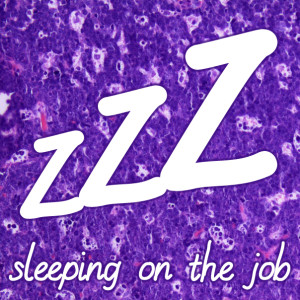One of the most oft repeated complaints I heard from patients during my internal medicine rotation was, “I can’t sleep.” From early morning rounds to beeping lights to the health conditions that brought them to the hospital in the first place, it’s no wonder that a good night’s rest is hard to come by in the hospital.
A recent study from a group at Johns Hopkins School of Medicine showed most patients get a meager five hours of sleep per night. But sleep plays an important role in recovery, and more should be done to foster good sleep among patients. This article contains three practical tips that medical students can follow to minimize sleep disruption and to enhance rest for our patients.
First, in many academic hospitals, the average patient is disturbed multiple times between the hours of 4 a.m. to 8 a.m. by visits from a medical student, resident, attending and a nurse if on morning medications. When one considers disturbances of patients in shared rooms, this number can double in early morning hours. Students can take a proactive role in minimizing these disturbances by coordinating their pre-rounds with the nursing staff. Understandably, this isn’t always possible in a busy hospital, but it’s a lot easier to accomplish than one might think. By simply inviting nurses to check in on patients with me at the start of a rotation, I found that many were willing to wait for my arrival before administering morning medications. In addition to minimizing sleep disruption, this technique strengthened my relationship with the nursing staff and resulted in more unified patient care.
Second, a typical hospital room contains many monitors and alarms used to enhance care. While essential, the “bells and whistles” of 21st century medicine are anything but conducive to sleep. Many patients find the equipment foreign and frightening. Many assume beeping means something bad is happening, even though this presumption is not always accurate. As such, education can alleviate a patient’s stress. Take a few moments when a patient is first transferred onto your service to explain why the equipment is used. For patients who require a dark room with peace and quiet, offer earplugs and an eye mask. Both residents and attendings will be impressed by your commitment to patient-centered care.
Third, according to Hopkins, pain is among the most common nuisance of sleep. Listening attentively to a patient’s sleep history and evaluating the adequacy of pain and sedative medications lasting through the night is a task fit for medical students. Reviewing side effects for other prescriptions on a patient’s medication list and recommending alternatives for those known to disrupt sleep is valuable.
Finally, teaching the nursing staff and the patient effective sleep hygiene, which includes bright daytime lights, avoiding naps and retiring to sleep at the same time each night, will improve the likelihood of sleeping despite discomfort.
It’s easy to let patient complaints of poor sleep fall on deaf ears. For many of us in medicine, the hesitancy to help reflects inadequate instruction on ways to improve sleep. Using simple techniques like those mentioned above can have a dramatic effect on a patient’s hospital stay and health.
There are very few settings in which a good night’s rest is more important than in medicine. It is vital for patients’ in recovery as well as for those entrusted with their care. Here’s some advice from a fellow medical student on ways to enhance sleep for patients and in each phase of medical training.

